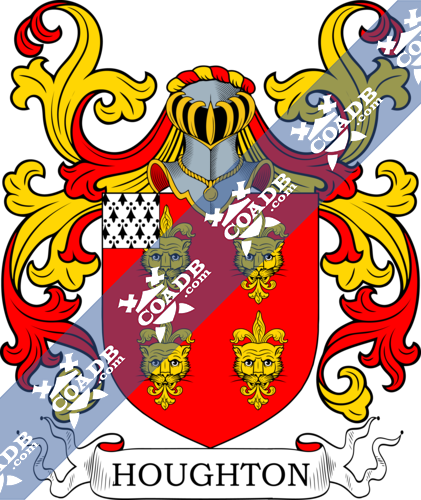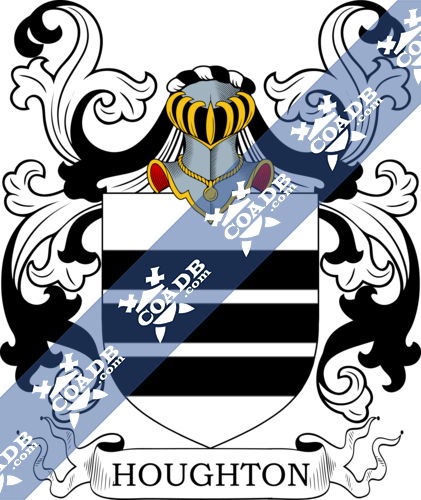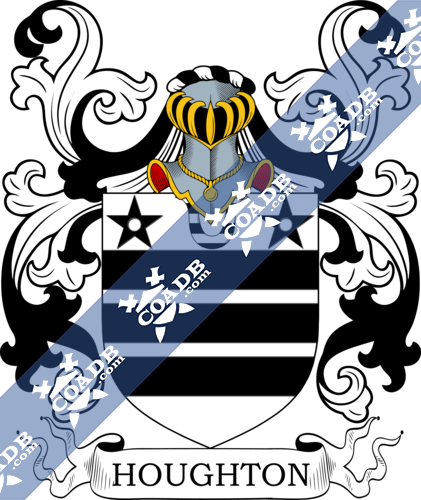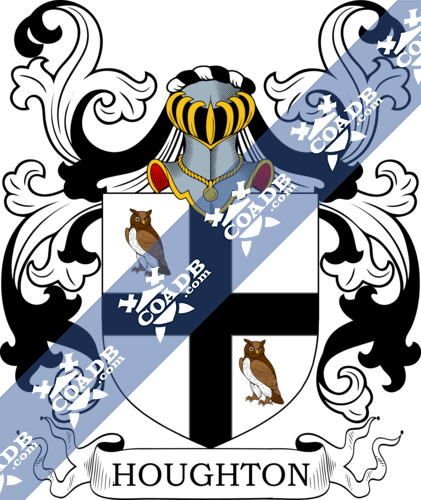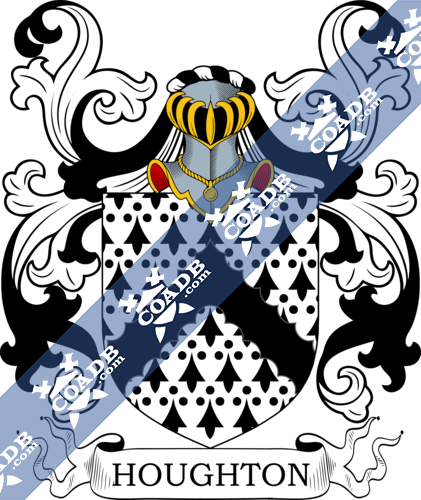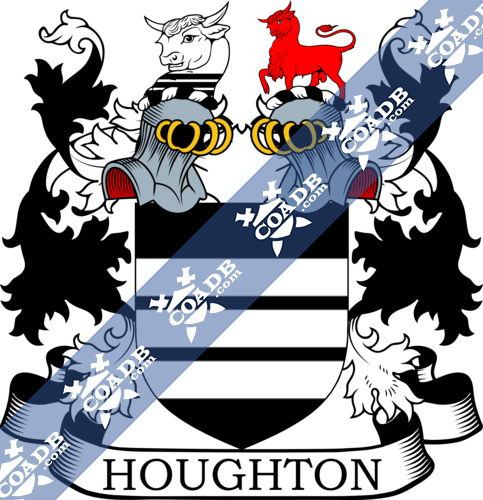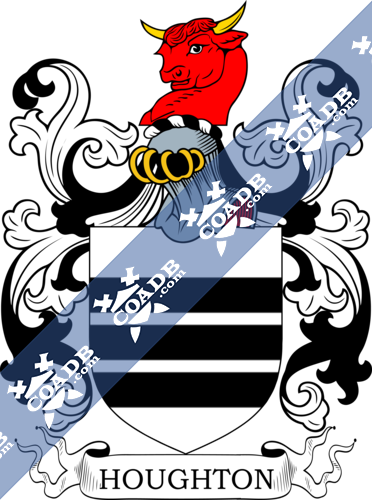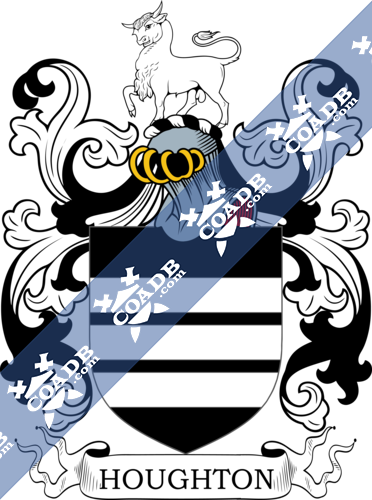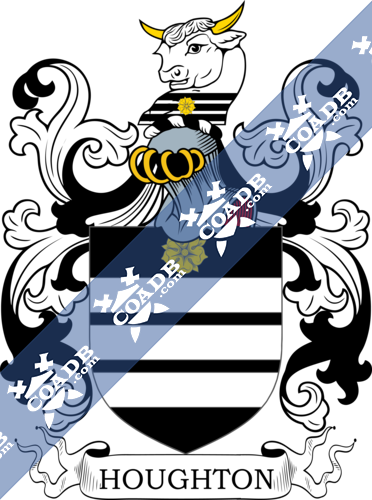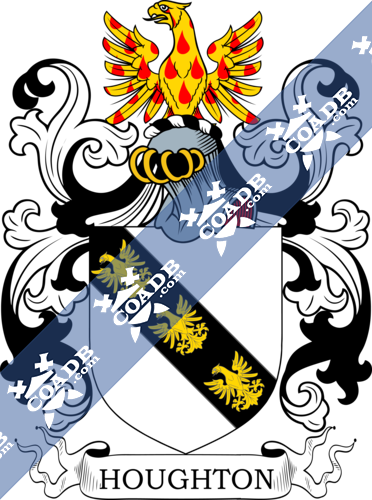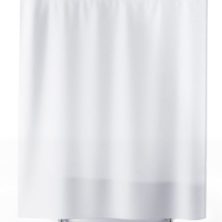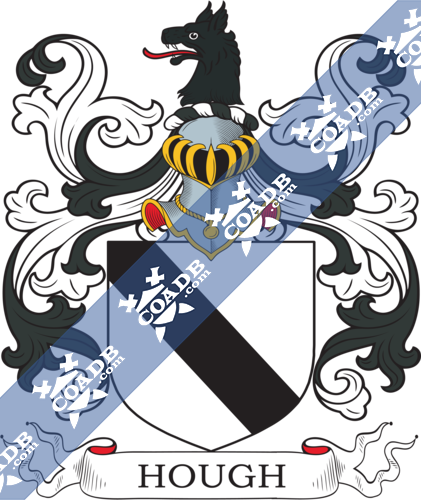Houghton Family Crest, Coat of Arms and Name History
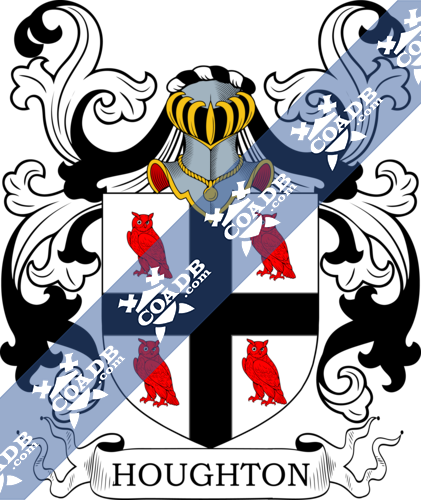
Houghton Coat of Arms Gallery
Don’t know which Coat of Arms is yours?
We can do a genealogical research. Find out the exact history of your family!
Learn MoreHOUGHTON
The name Houghton is of Anglo-Saxon/English origin and is considered topographical. It originated from the medieval English words “hoh” which is defined or translates to mean ridge and “tun” which translates to settlement. In the context of this surname it would mean someone who lived near or beside a are or a ridge or cliff.
The variations in the spelling of the surname includes; Houghton; Haughton; Haltone; Halstone; and Haustone among others. The variations in spelling of surnames, as well as many given or by-names dating back to ancient times can be attributed to a lack of consistency regarding guidelines for spelling in use by the scribes who recorded such information, many of which were in the habit of spelling phonetically. The issue of multiple spellings of names in records was compounded by the diversity of languages in use in European countries at this time.
Until the Norman invasion and conquest, surnames were rarely if ever used. In the small settlements and villages which existed during earlier times in most of Britain, residents found little need for surnames as everyone in these communities knew each other and a given name would usually suffice. However, as communities grew and people began to migrate on a larger scale, along with the need of the government having a reliable way to track people for tax and census purposes, the Norman aristocracy’s penchant for using surnames seemed the appropriate evolution to this problem. In most instances to distinguish themselves, one from another, those not of the noble class would often be identified by their given name plus their occupation while others may have been identified by their given name and one of their parent’s names. There was a boundless supply from which surnames could be formed, in addition to the use of patriarchal/matriarchal names or reference to the individuals occupation, there were things such as defining physical traits, a familiar geographical location or a topographical landmark found near the individual’s home or birthplace, the name of the village in which the person lived, and so much more. Over the course or time, surnames would come not just to represent an individual but whole families.
One of the earliest record of any variation of this surname is that of Simon Howtone which appears in the York tax rolls from 1279. The tax rolls, were a series of census and tax records kept by the English Treasury by order of King Edward III, with the oldest dating back to the 12th century. These documents are considered the oldest concentric set of records detailing English governance in the United Kingdom.
After the discovery of America and the addition to the British Commonwealth of countries such as Canada, Australia, and New Zealand, it was not long before people began to immigrate to these outlying areas. Some of the first recorded immigrants to America bearing the surname were Robert and Christine Houghton and their son John who arrived in or around 1635 and settled in New England.
George Houghton was an early settler to Canada, landing and settling in Nova Scotia in 1749. Lavinia Houghton was an early settler to Australia, landing and settling in Adelaide in 1838. Allan and Francis Houghton and their children, George, James, and John, were early settlers to New Zealand, landing and settling in Wellington in 1840.
Worldwide, the highest concentration of people with the surname Houghton are found in the United Kingdom, New Zealand, Australia, Canada, and the United States. By state, the largest percentile of those with the surname Houghton live in Maine, Massachusetts, Michigan, New Hampshire, and Utah.
There are many persons of note who bear the surname Houghton. Probably one of the earliest was Adam Houghton, Bishop of St. David’s and Lord Chancellor of England. He was educated at the University of Oxford where he graduated with a Doctor of Law degree in 1340. He was named as Bishop of St. David’s by Pope Innocent VI and consecrated by Bishop William Evendon in 1361.
Houghton also lends its name to various locations, towns, and buildings, one of the most notable is Houghton Hall in Norfolk. The grand manor was the home of David Cholmondeley, 7th Marquess of Cholmondeley. The estate is adjacent to Sandringham House, which is privately owned by Queen Elizabeth II.
Blazons & Genealogy Notes
1) (Haughton, co. Chester, Petersfield, co. Hants, cos. Lancaster and Sussex). Sa. three bars ar. Crests—1st: A bull’s head sa. attired ar. charged on the neck with three bars of the last; 2nd: A bull pass. gu.
2) (Haughton, co. Chester, Petersfield, co. Hants, cos. Lancaster and Sussex). Sa. three bars ar. Crests—1st: A bull’s head sa. attired ar. charged on the neck with three bars of the last; 2nd: A bull pass. gu.
3) (co. Lancaster). Ar. three bars sa. Crest—A bull’s head couped gu. horned or.
4) (Alderman of London, d. 31 Dec. 1596). Sa. three bars ar. Crest—A bull pass. ar.
5) (London). Ar. three bars sa. in chief two mullets pierced of the last, the horns barry of the first and second.
6) (King’s Clyff, co. Northampton, and of co. Rutland). Sa. three bars ar. in chief a rose or. Crest—A bull’s head ar. attired or, gorged with three bars sa. on the centre one a rose of the second.
7) (Gunthorp, co. Norfolk). Ar. on a bend sa. three eagles displ. or. Crest—A demi eagle displ. or, guttee de sang.
8) (Beckbury, co. Salop). Ar. a cross sa. in the dexter chief and sinister base an owl ppr.
9) (co. York). Erm. a cross engr. sa. Crest—A scymitar erect ar. hilt and pommel downwards or.
10) Erm. a chev. (another, two chevronels) engr. sa.
Ar. a cross sa. betw. four owls gu.
Gu. four leopards’ faces jesant-de-lis, two and two, or, a canton erm.
(Ballyanne and Kilmannock, co. Wexford; represented by Houghton, of Glashore, co. Kilkenny; the late George Powell Houghton, Esq., of Kilmannock, left three daus. his co-heirs, viz., Anne Coote, m. Sir John Marcus Stewart, Bart.; Alice, m. Captain Edward Webber Smith; and Charlotte, m. Standish O’Grady, Esq.; at the death of G. P. Houghton, Esq., his first cousin, George Henry Houghton, Esq., of Glashare, became heir male of the family. Impalement Fun. Ent., Valentine Savage, 1670, whose wife was Mary, dau. of Thomas Houguton, Esq., of Ballyanne). Ar. three bars sa.

